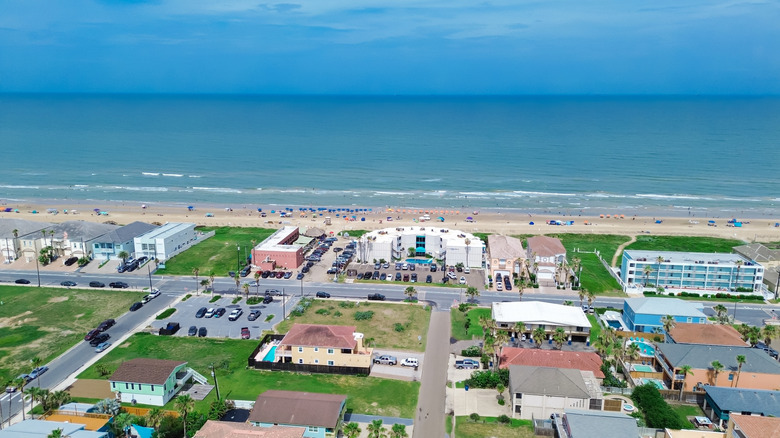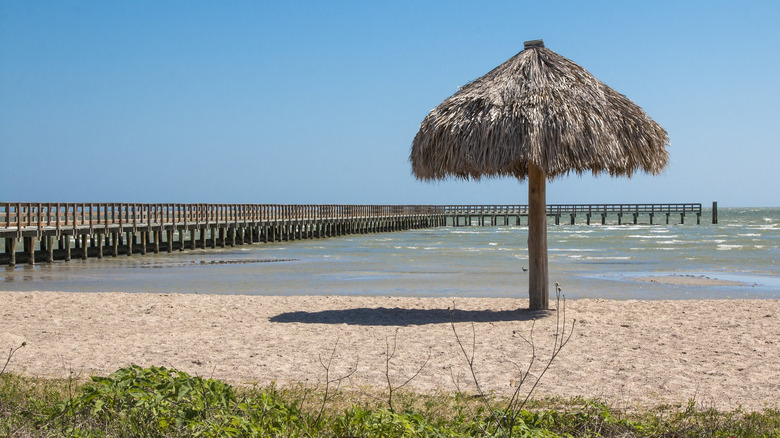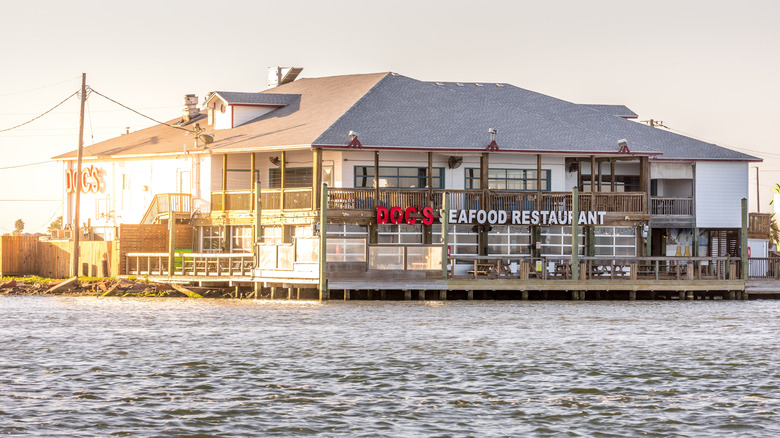The 'Tropical' Texas Region Brimming With Beaches, Quaint Towns, Water Sports, And Seafood Shacks
Until you've driven through it, it's hard to overstate how massive Texas is. It's so big that you could drive for hours or days and never even leave the state. So, when planning a Texas vacation, it's imperative to narrow your focus to one particular section. If you're a fan of tropical weather, good food, and beachside fun, the Texas Tropical Trail Region offers a wide variety of activities and scenery.
This region is the only tropical area in Texas, and it encompasses over 23,000 square miles. While there isn't a hard border, the roughly triangle-shaped region runs from about Carrizo Springs to the Gulf Coast, just north of Corpus Christi, all the way down to Brownsville near Mexico. With such a broad area to cover, you should narrow your focus to a specific area to make your travels easier. For example, you can stick to the coastline and explore the miles of sunny beaches at South Padre Island.
Alternatively, you can hug the Texas-Mexico border and explore cities like Laredo, Zapata, or Brownsville. No matter where you travel within this region, you'll experience its rich culture, vibrant climate, and stunning vistas. So, let's pack our warm-weather clothing and see what makes the Texas Tropical Trail Region so inviting.
A north-south trip along the Texas coastline
Since we're talking about a tropical region, it makes sense to spend most of your time along the coastline. Fortunately, there are plenty of options if you love sand, waves, and water sports. Starting at the north end, with the town of Rockport. Rockport Beach Park has white sands, a pavilion that hosts live events, and an 800-foot fishing pier. It's also home to some of the bluest waters in the region, with clean shallows that are perfect for swimmers of all skill levels.
If you go further down, you'll reach Aransas and Corpus Christi. If you want to dip your toes in the Gulf of Mexico, you'll want to head to Aransas, which is at the tip of a barrier island. Alternatively, Corpus Christi features beaches on its bay, like Dolphin Park, North Beach, and McGee Beach. There's also the Texas State Aquarium along the water's edge if you want to see some sea life up close. The other benefit of staying by the bay is that you can rent jet skis, boats, and paddleboards, as you don't have to worry about strong ocean currents capsizing your rig. J&C Watersports in Corpus Christi is a great place to start.
As you go down the coast, you'll eventually run into the wildly underrated North Padre Island, which is full of sandy beaches and almost no crowds. Because the island is mostly reserved for nature, you don't have to struggle to find a quiet spot to enjoy the sun and sand. However, if you want more amenities, you can drive on to South Padre Island. This area has more resorts, restaurants, and attractions (like Gravity Park or the Birding and Nature Center), especially as you get closer to the Mexican border.
The culinary delights of the Texas Tropical Trail Region
Seafood is another major draw of the Texas Tropical Trail Region. If you're going to spend most of your time along the coastline, you might as well indulge in some of the freshest Gulf Coast dishes in the Lone Star State. Since we went north to south in the last section, let's start at South Padre Island and Port Isabel and work our way up. Because this particular area is so close to Mexico, you'll get a blend of Tex-Mex-style dishes. Some of the best examples of this cuisine can be found at the Grouchy Gringo, Los Tortugos Seafood Market, Ceviche Ceviche, and Baja Fish Tacos. However, there are tons of great seafood options, so you can go to a different establishment every day and experience them all.
As you make your way up the coastline, you can find the odd seafood shack in destinations like Port Mansfield (home of KJ's Laguna Bar and Grill) or Loyola Beach (home of the King's Inn resort and restaurant). If you go further inland, you'll run into steakhouses and barbecue joints. After all, you're not far from Kingsville, home of one of America's largest ranches.
Once you reach Corpus Christi and Aransas, you're back in seafood country. Again, you can take your pick from spots out on the barrier islands or along the bay. For island eats, there's Doc's Seafood and Steaks, Hometown Seafood Padre Island, or Fins Grill and Icehouse. If you're situated in Corpus Christi, you can check out spots like Black Diamond Oyster Bar, Pompano's Seafood House, or Catfish Charlie's. In this area, the restaurants are more Americanized and feature grilled, fried, or sautéed seafood, including fish, shrimp, oysters, and crab.
Planning your trip across the Texas Tropical Trail Region
While the Texas coastline is a huge part of the Tropical Trail Region, there are many other quaint towns and cities to visit in this part of the state. Depending on where you're coming from, the best way to get to the area is to fly into San Antonio International Airport or Corpus Christi International Airport and rent a car. From there, you can either head straight to the coastline or go further inland toward the Texas-Mexico border. For example, the town of Laredo straddles the border, so you can experience both Texan and Mexican culture, especially if you have your passport.
As far as lodging goes, you can find hotels, motels, and resorts pretty much everywhere within the region. Typically, these will be major chains like Best Western, Hampton Inn, La Quinta, and others. If you want more locally owned hotels and resorts, they'll be in bigger cities like Laredo, Brownsville, Corpus Christi, or South Padre Island. As a rule, the nicer resorts are closer to the water and offer some of the best views in Texas. One example is the Seabreeze Beach Resort on South Padre Island, which directly overlooks the ocean.
Another point to keep in mind is the sheer size of the Texas Tropical Trail Region. If you plan to visit as many attractions as possible, you may choose to zig-zag back and forth between the Mexico and Gulf Coast sides. However, depending on your destination, each trip will take at least two to three hours or more. So, it might be easier to stick to a particular section — or you can allocate a generous amount of time to drive around and experience as much of the Tropical Trail Region as possible.



